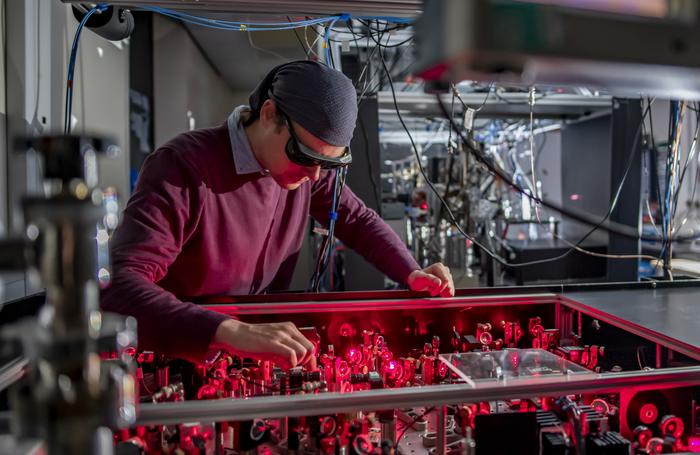Researchers at the University of Nottingham’s School of Physics have developed a 3D printed vacuum system to detect dark matter by identifying domain walls. This vacuum system reduces gas density and introduces ultra-cold lithium atoms, aiming to detect scalar fields theorized to represent dark matter or dark energy.
Dark matter and dark energy constitute about 95% of the universe’s content. The scalar fields might explain dark matter’s missing mass in galaxies and dark energy’s role in the universe’s accelerating expansion. By observing the behavior of ultra-cold atoms within the vacuum system, researchers aim to detect “dark walls,” defects in scalar fields formed under low-density conditions.

The team constructed the 3D printed vacuum vessels based on theoretical calculations predicting the ideal shape and structure for trapping dark matter. By cooling lithium atoms with laser photons to nearly absolute zero, these atoms exhibit quantum properties that enable precise analysis. The experiment involves passing a cold atom cloud through the vacuum system to detect deflections, indicating the presence of dark walls.
Associate Professor Lucia Hackermueller led the design of the vacuum chamber, which took three years to build. Results are expected within a year. The findings will enhance understanding of dark energy and dark matter, demonstrating how controlled lab experiments can measure otherwise unobservable cosmic phenomena.
“Whether we prove dark walls exist or not it will be an important step forwards in our understanding of dark energy and dark matter, and an excellent example of how a well controlled lab experiment can be designed to directly measure effects that are relevant for the Universe and otherwise cannot be observed.” said Hackermueller.
You can read the research paper, titled “Detecting dark domain walls through their impact on particle trajectories in tailored ultrahigh vacuum environments” over at this link.
Source: scienmag.com

